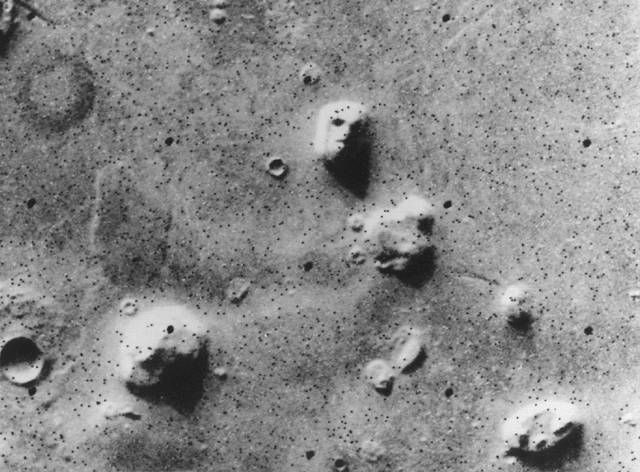NASA’s Curiosity Rover Spots A Rat Among The Rocks On Mars? [PHOTO]
NASA’s Curiosity Rover may have taken a photo of a rat on Mars, according to a blogger on the Internet. The curious picture has some believing there's a rat among the rocks in a picture taken on Sept. 28, 2012.
The photo was taken by NASA’s Curiosity Rover at the "Rocknest" from Sol 52 location, according to NASA. The agency describes the site as “this patch of windblown sand and dust downhill from a cluster of dark rocks. It's known as the Rocknest site, which has been selected as the likely location for first use of the scoop on the arm of NASA's Mars rover Curiosity.”

In the original photo, it appears that Curiosity captured an image of a Martian landscape, but according to UFO Sightings Daily, a closer look reveals a rat among the rocks. Viewing the image in its original size, the “rat” can be seen above the blue-colored rock in the lower-left corner. Using that rock as a starting point, and going diagonally to the left, the rat can be seen between two rocks.
The article’s author, ScottCWaring, describes the rat as “a cute rodent on Mars. Note its lighter-color upper and lower eyelids, its nose and cheek areas, its ear, its front leg and stomach. Looks similar to a squirrel camouflaged in the stones and sand by its colors.” He speculates that NASA scientists prematurely announced a huge discovery by Curiosity but later decided to keep the proof of life on Mars a secret to ensure other countries didn't try to go to Mars.
In an update to the original story, the author shared several emails from readers who describe the rat on Mars as a NASA experiment to determine the chance of survival on the planet’s surface. NASA would want to keep such an experiment secret to prevent any court battles or questions about ethics.

Fox News points out this phenomenom is common and has a name, pareidolia, which is a bit of a psychological trick that causes humans to discern faces or anthropomorphic qualities in random objects -- like religious imagery found in tacos or on windows. In regard to Mars, the most famous pareidolia is the Face on Mars, a rock formation that, due to light and shadows, has the appearance of a face. The photo was taken by NASA’s Viking 1 spacecraft, which orbited Mars on July 25, 1976.
© Copyright IBTimes 2024. All rights reserved.












